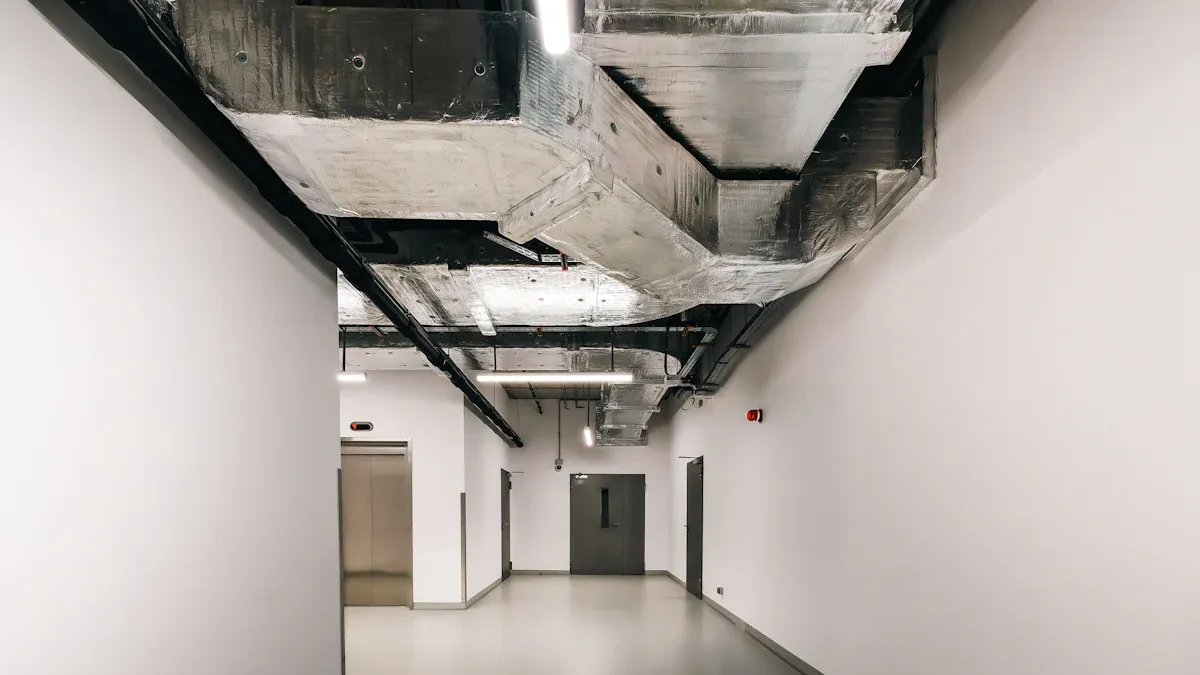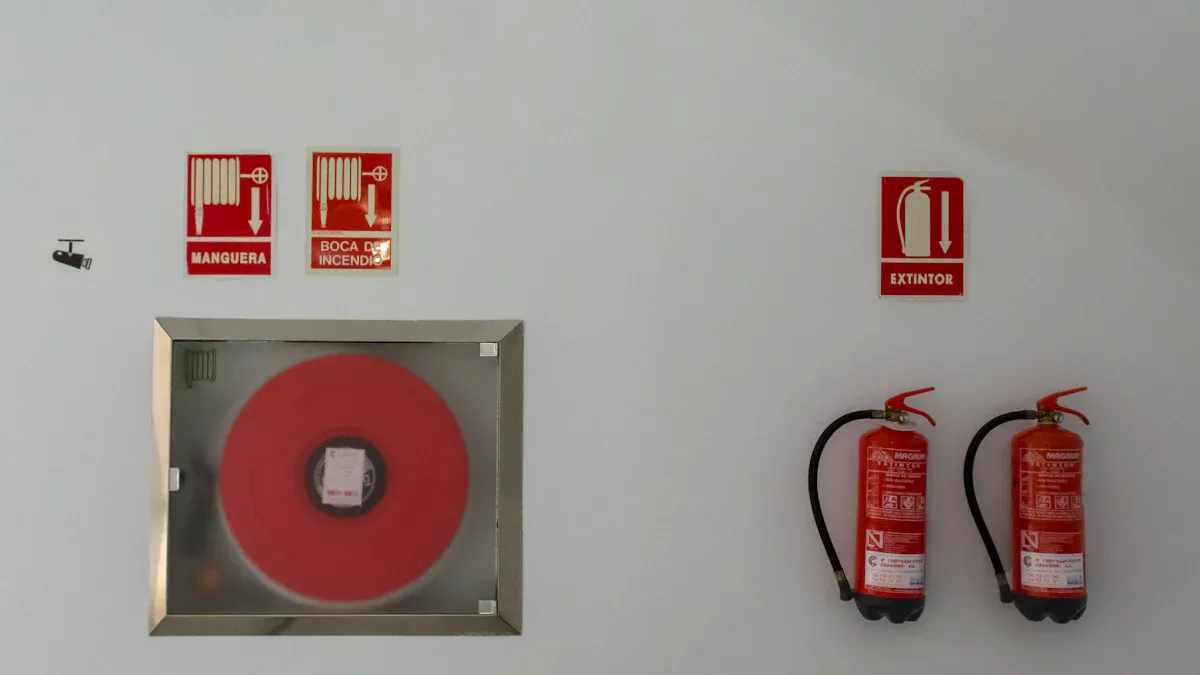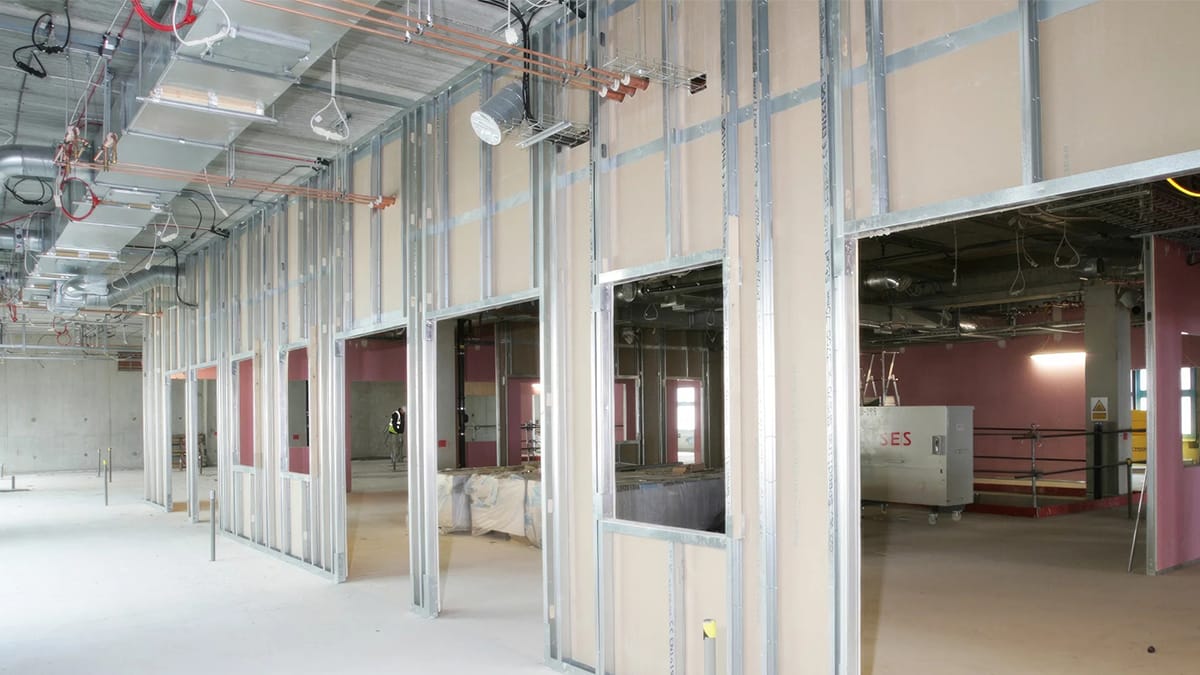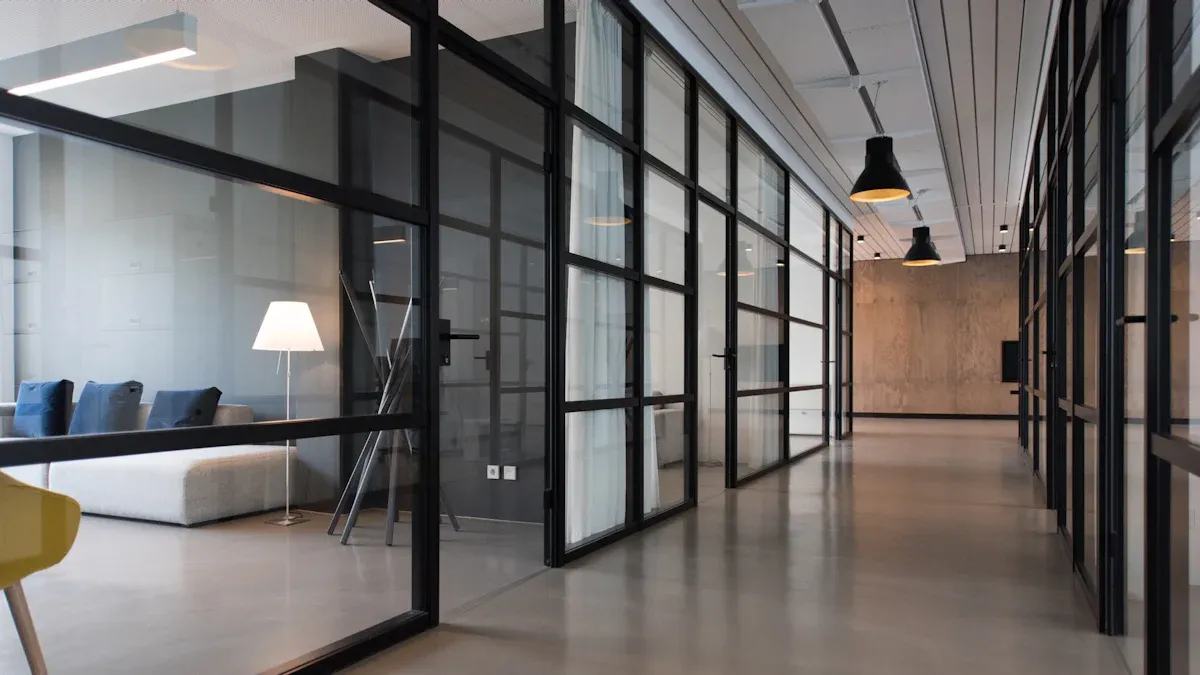
25 Sep Trending Fire Resistant Wall Panels For Modern Projects
Table of Contents
You want to choose fire resistant wall panels that protect people and property. Start by looking for panels from trusted manufacturers. Make sure the core materials do not burn easily. Always check the fire ratings on each product. Think about your project’s needs. Balance safety, looks, and cost. Do not forget to check if the panels meet local rules. Every project is different, so choose panels that fit your design and safety goals.
Key Takeaways
Pick fire resistant wall panels from good companies. Check the fire ratings to make sure they are safe. Make sure they follow local building rules.
Know what your project needs for fire safety. Different buildings need different fire ratings. This depends on how tall they are and what they are used for.
Choose wall panels that fit your design plans. Think about colors, textures, and finishes. These should make the building look nice and stay safe.
Find panels with non-combustible core materials like mineral wool or gypsum. These materials help stop fire and slow down heat.
Always check for third-party certifications for fire resistant panels. Certifications from trusted labs show the panels meet safety rules.
Project Needs
Fire Safety Requirements
You need to start by understanding your fire safety needs. Every project has different risks. You should check the fire rating required for your building. Taller buildings often need panels with higher fire resistance. If you work on a hospital or school, you must follow strict rules. Make a list of your fire safety needs before you choose any panels.
Tip: Ask your local fire department for advice on fire safety needs for your project.
Design Goals
Your design goals matter when you select wall panels. You want panels that look good and keep people safe. Some panels come in many colors and textures. You can match them to your building’s style. If you want a modern look, choose panels with smooth finishes. For a classic style, pick panels with patterns or natural tones.
Think about how the panels will fit with your lighting and furniture.
Make sure your design does not lower fire safety.
Building Type
The type of building changes what panels you need. Commercial buildings like offices need panels that meet business codes. Homes need panels that protect families. Factories need panels that stand up to heat and chemicals.
Building Type | Panel Needs | Example Features |
|---|---|---|
Commercial | High fire rating | Durable, easy to clean |
Residential | Safe for families | Good insulation |
Industrial | Extreme fire resistance | Chemical protection |
You should also think about the height and function of your building. Taller buildings need panels with longer fire resistance times. Buildings with many people need panels that slow down fire spread. Always match your panel choice to your building’s fire safety needs.
Fire Resistant Wall Panels & Ratings

Fire Ratings
It is important to know fire resistance ratings. These ratings show how long a panel can stop fire. You might see ratings like 1-hour, 2-hour, or 3-hour. A 1-hour rating means the panel holds back fire for one hour. This gives people more time to get out safely.
In the United States, panels use ASTM fire resistance ratings. ASTM means American Society for Testing and Materials. ASTM E119 is a common test for wall panels. It checks how long a panel can stand up to fire and heat. In Europe, panels use EN standards. EN 13501-2 is the main test for fire resistance in Europe. Both systems use strict tests to make sure panels work well in a fire.
You should always check the fire resistance ratings on the label. Pick panels that meet or go past your local building codes. If your building is tall or has many people, you need panels with higher fire resistance. Hospitals, schools, and offices often need panels that last longer in a fire.
Tip: Ask the manufacturer for test reports that show fire resistance ratings. This helps you make a safe choice.
Comparing Standards
You will see different fire resistance ratings in different places. ASTM and EN standards both test how long a panel can stop fire. They use different ways to test. ASTM uses time and temperature to see how long a panel lasts. EN uses classes like EI30, EI60, or EI90. The number shows the minutes the panel can resist fire.
You should compare fire resistance ratings from both systems for international projects. Some panels list both ASTM and EN ratings. This makes it easier to match your project needs.
The core material inside the panel is very important. Non-combustible materials like mineral wool or rockwool give better protection. Mineral wool is a popular choice for fire resistant wall panels. It does not burn and helps slow down heat. Here are the main pros and cons of mineral wool:
Aspect | Advantages | Disadvantages |
|---|---|---|
Installation | Easy to cut and install because it is stiff. | Heavier than fiberglass, so installation is harder. |
Thermal Performance | Higher R-value (just above R4 per inch) than fiberglass. | Other insulation may have much higher thermal values. |
Price and Availability | Many manufacturing options, including fire-resistant types. | More expensive than fiberglass and harder to find. |
Pick panels with non-combustible cores for the best fire resistance. These panels help protect people and property. Always check the product details and ask for proof of fire resistance ratings before you buy.
Trending Materials
When you choose fireproof wall panels, you want to know which materials work best for your project. Many modern projects use fireproof panels made from MgO wall panel, gypsum, cement, or metal composites. Each type has its own strengths and weaknesses. You should always pick fireproof panels from reliable manufacturers to make sure you get quality and safety.
MgO Wall Panels
 Magnesium wall boards fire rated A1(non-combustible). They follow strict rules for fire safety. These panels can face open flames and do not make smoke or harmful gases. This makes them good for places where fire safety is very important. New studies show health and safety benefits like fire resistance, water resistance, pest control, and long-lasting strength:
Magnesium wall boards fire rated A1(non-combustible). They follow strict rules for fire safety. These panels can face open flames and do not make smoke or harmful gases. This makes them good for places where fire safety is very important. New studies show health and safety benefits like fire resistance, water resistance, pest control, and long-lasting strength:
Health and Safety Benefit | Description |
|---|---|
Fire Resistance | MgO panels have a Class A1 fire rating. They let out water vapor in a fire. This helps cool and stop the fire. |
Water Resistance | The panels do not let water or moisture in. They stay strong and keep their shape even when wet. |
Pest Resistance | The chemicals in the panels keep away termites and bugs. This lowers health risks from pests. |
Durability and Stability | Because they resist water and pests, the panels stay strong. This makes them safer in wet or bug-filled places. |
Gypsum Panels
Gypsum panels are a popular fireproof choice. You find them in schools, offices, and homes. These panels use water crystals inside the gypsum. When fire hits the panel, the water turns to steam and forms a barrier. This slows down the fire and keeps heat from spreading. Gypsum panels can stop fire from moving to other rooms. They also work as good thermal insulators. You can use fireproof gypsum panels for walls and ceilings.
They help stop fire from spreading.
These panels insulate against heat.
Gypsum panels do not resist water, so you should not use them in wet areas.
Cement Panels
Cement panels give you strong fireproof protection. You see them in places that need tough walls, like factories or hospitals. Cement panels resist fire and heat for a long time. They also stand up to water and mold. You can use fireproof cement panels outside or inside. These panels last a long time and need little care. Both gypsum and cement panels resist fire, but cement panels work better in wet or harsh places.
Metal Composites
Metal composite panels give you a modern fireproof option. These panels use layers of metal and a fireproof core, often mineral wool or rockwool. You can use fireproof metal composites on tall buildings, offices, or shopping centers. They look sleek and come in many colors. Metal composite fireproof panels resist fire, heat, and weather. You can clean them easily and they last for years. Always check that the fireproof core is non-combustible.
Tip: Always buy fireproof panels from trusted brands. Look for test reports and certifications to make sure your fireproof panels meet safety standards.
Performance & Durability
Thermal Resistance
You want wall panels that stop heat from moving. Good fireproof materials slow heat during a fire. This gives people more time to get out. Gypsum, cement, and metal composite panels block heat well. Cement panels work best in hot places. Metal composites with mineral wool cores also stop heat. You should check the fire rating for each panel. This rating shows how long the panel stops heat and flames.
Tip: Always ask for test results that show how well the panel resists heat.
Structural Integrity
You need panels that stay strong in a fire. Fireproof materials like cement and metal composites keep their shape. They do not break when it gets hot. Gypsum panels work for a while, but cement panels last longer. Metal composite panels with non-combustible cores do not bend or snap. You should look for panels that pass tough strength tests. Strong panels help protect the building and keep people safe.
Material Type | Structural Strength | Best Use Case |
|---|---|---|
MgO | High | Tall buildings, Malls, Homes, offices |
Gypsum | Moderate | Homes, offices |
Cement | High | Hospitals, factories |
Metal Composite | High | Tall buildings, malls |
Maintenance
You want fireproof panels that last and need little care. Cement panels resist water, mold, and bugs. Metal composites are easy to clean and do not rust if finished right. Gypsum panels need more care, especially in wet places. You should check panels for damage after a fire or accident. Regular checks help you find problems early. Most fireproof panels last long if you follow care instructions.
Note: Pick panels that fit your building and are easy for you to take care of.
Compliance & Certification
Building Codes
You have to follow building codes when picking fire resistant wall panels. Building codes are rules that keep people safe in your area. These rules say what fire rating your panels need. They also tell you where to put fire resistant panels in your building. You can find these rules in papers from your city or state. If you ignore these codes, you might get fined or your project could be delayed.
Tip: Always look at the newest building codes before buying panels. Codes might change every year.
You should talk to your local building department for help. They can explain the fire safety rules for your project. Some codes use national standards like the International Building Code (IBC) in the United States. Other codes use local rules. You need to make sure your panels match the code for your project.
Here is a simple guide:
Code Type | What It Covers | Where to Check |
|---|---|---|
National Codes | General fire safety rules | IBC, NFPA |
Local Codes | Extra rules for your region | City or state website |
Third-Party Certifications
You should always check for third-party certifications on fire resistant wall panels. These certifications show the panels passed tough fire tests. Trusted labs like UL (Underwriters Laboratories) or FM Approvals test panels for fire resistance. They give a certificate if the panel meets safety rules.
UL Mark: Shows the panel passed fire safety tests.
FM Approval: Means the panel meets high safety standards.
Intertek: Another trusted lab for fire testing.
Note: Do not trust panels without certification proof. Ask the maker for test reports and certificates.
You can find certification labels on the panel or in the product papers. These labels show the panel is safe and legal for your project. Always keep copies of these certificates for your records. This helps you pass checks and keeps your project safe.
Budget & Installation
Cost Comparison
When you plan your project, you need to look at the cost of different fire-rated wall systems. Some panels cost more because they use special materials or have higher fire ratings. Gypsum panels often cost less than cement or metal composite panels. Cement panels give you strong fire protection, but you may pay more for them. Metal composite fire-rated wall systems usually cost the most. They offer a modern look and high safety.
Here is a simple table to help you compare:
Panel Type | Average Cost (per sq ft) | Fire Rating | Best Use Case |
|---|---|---|---|
MgO Panel | $3.00 – $6.00 | 2-3 hours | Tall buildings, Malls, Homes, offices |
Gypsum | $1.50 – $3.00 | 1-2 hours | Homes, offices |
Cement | $3.00 – $6.00 | 2-3 hours | Hospitals, factories |
Metal Composite | $5.00 – $10.00 | 2-3 hours | Tall buildings, malls |
Tip: Always include the cost of labor and extra materials when you budget for fire-rated wall systems.
Installation Ease
You want fire-rated wall systems that install quickly and safely. Gypsum panels are light and easy to cut. You can install them with simple tools. Cement panels weigh more, so you may need extra help or machines. Metal composite fire-rated wall systems often come in large sections. You need skilled workers to install them the right way.
Gypsum panels: Fast to install, good for small projects.
MgO Panels/Cement panels: Take more time, best for strong walls.
Metal composites: Need expert installers, work well for big jobs.
You should also think about the timeline for your project. Fast installation saves you money and keeps your project on track. Always ask your supplier about the best way to install your chosen fire-rated wall systems.
Aesthetics & Flexibility

Colors & Finishes
You want your building to look nice and be safe. Fire resistant wall panels now come in lots of colors and finishes. You can pick a style that fits your project. Some panels have metallic paint. These paints can change color in the light. They also show lines and patterns. Other panels use special colors. These colors help bounce sunlight away and keep your building cool. You can also pick finishes like Light Stone – Tuff Cote®. This finish looks different but does not match every normal color.
Here is a quick guide to some popular color and finish options:
Color Option | Description |
|---|---|
Metallic Paint Finishes | Shows color changes, shade differences, lines, and long patterns. |
Premium I and II Colors | Made for saving energy and reflecting sunlight. |
Light Stone – Tuff Cote® | Does not match the Light Stone – Standard SP color choices. |
Tip: Ask your supplier for color samples. This helps you see how the finish looks in real light.
Customization
You can change fire resistant wall panels to fit your project. You might want a certain wall shape or a special insulation. These choices change how your building looks and how safe it is. Solid wall panels protect better from fire than panels with holes or spaces. If you use Rockwool for insulation, you get even more fire safety. Rockwool slows down heat and keeps the wall strong in a fire.
You can also pick the size, shape, and surface of your panels. Some panels have grooves or patterns. Others are smooth for a modern style. You can even order panels that fit around windows or doors.
Pick solid wall panels for the best fire safety.
Choose Rockwool insulation for extra fire protection.
Ask about custom shapes and textures to match your design.
Note: Always check that your custom panels still follow fire safety rules. Custom features should never make fire safety worse.
Top Fireproof Recommendations
Best Panels by Project Type
It is important to pick the right fireproof wall panels. Every building needs something different. Some panels work better in homes. Others are best for hospitals or tall offices. You should look at what each panel can do before you choose.
1. Residential Projects 🏠
Homes need panels that keep families safe. Gypsum panels are good for houses. They help stop fire from moving between rooms. These panels also block sound and heat. You can paint them any color you like.
Tip: Put gypsum panels in bedrooms, living rooms, and hallways for more safety.
2. Commercial Buildings 🏢
Offices, schools, and stores need panels that follow strict rules. Cement panels give strong fire protection. They last a long time and do not get moldy. Use them in busy places like halls, stairs, and kitchens. Metal composite panels look modern and come in many colors.
Project Type | Best Panel Choice | Key Benefits |
|---|---|---|
Office | Metal Composite | Modern look, high fire resistance |
School | Cement | Durable, safe for students |
Retail Store | Gypsum or Metal | Easy to install, stylish options |
3. Industrial Facilities 🏭
Factories and warehouses have more fire risks. You need panels that can handle heat, chemicals, and hits. Cement panels work best in these places. They do not burn or break easily. Metal composite panels with mineral wool cores also protect against fire and heat.
Note: Always check that your panels have the right fire rating for your building type.
4. Healthcare and Hospitals 🏥
Hospitals need the highest fire safety. Use cement panels in patient rooms, halls, and exits. These panels resist fire, water, and germs. Metal composite panels work well in labs and operating rooms. They are easy to clean and help keep people safe.
5. High-Rise Buildings 🏙️
Tall buildings need panels that slow fire and help people get out safely. MgO panels with non-combustible cores give strong fire protection. You can use these panels inside and outside. They also help with insulation and noise.
Callout: Always buy fire-resistant panels from trusted brands. Ask for test reports and certifications before you buy.
Quick Reference Table
Building Type | Recommended Panel Type | Why It Works Best |
|---|---|---|
Home | Gypsum | Easy to install, good fire barrier |
Office/School | Cement or Metal Composite | Strong, meets codes, modern look |
Factory/Warehouse | Cement | High fire and impact resistance |
Hospital | Cement or Metal Composite | Safe, clean, resists water and germs |
High-Rise | MgO Panel | Non-combustible core, strong protection |
You should always pick panels that fit your project’s needs. Think about fire ratings, how long they last, and how they look. Fire-resistant panels help keep people and property safe in every building.
When picking fireproof wall panels, check who made them. Look at the core materials inside each panel. Make sure you read the fire ratings and certifications. You need to think about safety, style, and price. Fireproof wall panels help keep people and buildings safe. Talk to experts for advice and learn about new rules. New trends in fireproof wall panels will change future building codes. Here is a table with important things to know:
Factor | Description |
|---|---|
Fire Performance | Modular wall panel designs with SHS steel columns |
Fire Resistance Levels | Evaluating FRL to influence building codes |
Thickness of Sheathing | Critical for fire resistance, may lead to updated regulations |
Insulation Ratios | Cavity Insulation Ratio impacts required insulation FRL |
FAQ
What makes a wall panel fire resistant?
You get fire resistance from special core materials like mineral wool or gypsum. These materials do not burn easily. They slow down heat and flames. Always check the fire rating label before you choose a panel.
How do I know if a panel meets building codes?
You should look for certifications from trusted labs like UL or FM Approvals. These show the panel passed fire safety tests. Ask your supplier for proof. Local building departments can also help you check compliance.
Can fire resistant panels lower fire risk in my building?
Yes, fire resistant panels help lower fire risk. They slow the spread of flames and heat. This gives people more time to leave safely. You should always install panels correctly for the best protection.
Are fire resistant wall panels available in different styles?
You can find many styles, colors, and finishes. Some panels look modern, while others have classic patterns. You can also ask for custom shapes or textures to match your design needs.
